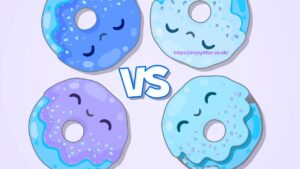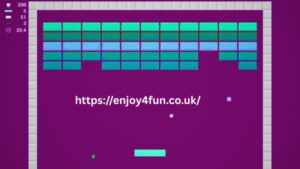If you’ve ever found yourself zoning out with a fidget spinner or endlessly watching domino videos on YouTube, chances are you’d fall in love with Sandspiel It’s one of those games that quietly grabs your attention and doesn’t let go not because it’s flashy or action-packed, but because it taps into something deeply human: the joy of creation and destruction, over and over again.
Let’s dive into what Sandspiel is, why it’s so addictively satisfying, and how it became a hidden gem in the world of physics simulation games.
What Is Sandspiel?
Sandspiel is a browser-based sandbox game that simulates the interaction of different particles think sand, fire, water, ice, acid, wind, etc. in real time. The name is a blend of the German word spiel (which means “play” or “game”) and “sand,” which pretty much tells you what to expect: a digital sandbox where you “play” with elements like a curious child at the beach… if that child also had a PhD in physics and a penchant for chaos.
Created by Max Bittker, the game is open-source and completely free to play on desktop or mobile via. There’s no app to download, no user account required, and no instructions really just a palette of materials and a canvas where anything can happen.
How Does It Work?
At its core, Sandspiel is a cellular automata simulator which is a fancy way of saying each particle (or “cell”) follows simple rules that, when multiplied across thousands of particles, create mesmerizingly complex behaviors.
For example:
- Sand falls down due to gravity.
- Water flows and pools, seeking lower ground.
- Fire spreads and burns flammable material.
- Ice cools down nearby particles and melts when exposed to heat.
- Acid eats through almost anything.
- Plant grows when it touches water.
There are dozens of materials, and they all interact with one another in interesting, sometimes surprising ways. Drop a bit of fire onto oil, and boom explosion. Sprinkle water over lava, and it cools into stone. Put acid near metal, and watch it corrode.
This makes Sandspiel not just a fun game, but a kind of interactive chemistry physics lesson one where you learn by experimenting, failing, and trying again.
The Joy of Creation and Destruction
What makes Sandspiel so special is how it gives you both complete control and utter unpredictability. You can paint a beautiful forest scene, then torch it with a single drop of fire. You can build a dam, then test it with rising floods. You can draw pixel art in metal, then corrode it slowly with acid like nature reclaiming a forgotten civilization.
It’s like watching the world end in slow motion and then building it again from scratch.
There’s something weirdly meditative about this. You’re not trying to win. There are no enemies, no levels, no score. Just you, some elements, and the blank canvas.
It feels… peaceful. Even when everything is blowing up.
Why Is Sandspiel So Popular?
Despite being so simple (or maybe because of it), Sandspiel has developed a cult following, especially among fans of creative, open-ended games like Minecraft, Noita, or The Powder Toy.
Here’s why people can’t get enough of it:
- Instant Gratification – There’s no setup. You click a material, click on the canvas, and boom stuff starts happening. It’s as immediate and satisfying as popping bubble wrap.
- Creative Freedom – You can make pixel art, simulate forest fires, invent weird experiments, or just go nuts with lava. There are no limits.
- Educational Value – Even without meaning to, you end up learning how different materials interact. Teachers have even used it in classrooms to illustrate basic physics concepts.
- Low Barrier to Entry – No downloads, no fees, no login just open a browser and play.
- Community Sharing – Players can share their creations via links, so you can view what others have made or remix them yourself.
Advanced Features You Might Miss
At first glance, Sandspiel seems super minimal just a box and some materials. But dig a little deeper and you’ll find some cool tricks:
- Undo/Redo Buttons – Let you fix mistakes or replay your destruction.
- Save + Share – You can save your canvas and generate a shareable link.
- Brush Size – Allows for fine detail or big chaotic blobs.
- Temperature Simulation – Materials are affected by heat and cold, making fire and ice more interesting than you’d think.
- Performance Controls – You can tweak the simulation speed and resolution if your device is lagging.
These tools make Sandspiel surprisingly powerful, especially if you’re into pixel art or experimental simulations.
Similar Games to Try If You Like Sandspiel
If Sandspiel has scratched an itch you didn’t know you had, here are some related games worth exploring:
- The Powder Toy – A more complex version with deeper physics, nuclear reactions, and more user-created content.
- Noita – A magical roguelike where every pixel is simulated, just like in Sandspiel but with enemies, potions, and permanent death.
- Falling Sand Game – One of the originals, a bit rougher in design but still fun.
- WorldBox – A god simulator where you grow civilizations and wipe them out with meteors and plagues.
- Algodoo – A physics sandbox for building machines and simulating 2D physics in more of an engineering style.
Final Thoughts
Sandspiel is one of those rare games that manages to be simple, profound, relaxing, and chaotic all at the same time. Whether you’re using it to pass five minutes during a break or zoning out for hours after a stressful day, it delivers a strangely powerful sense of calm and curiosity. There’s no pressure. No rules. Just elements waiting to collide, and a digital canvas begging to be filled or blown up.






